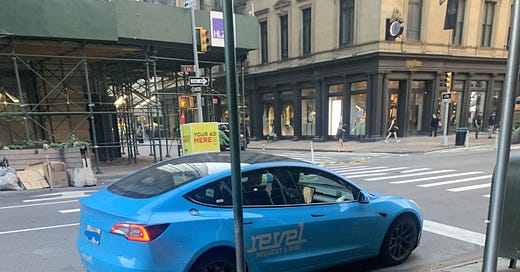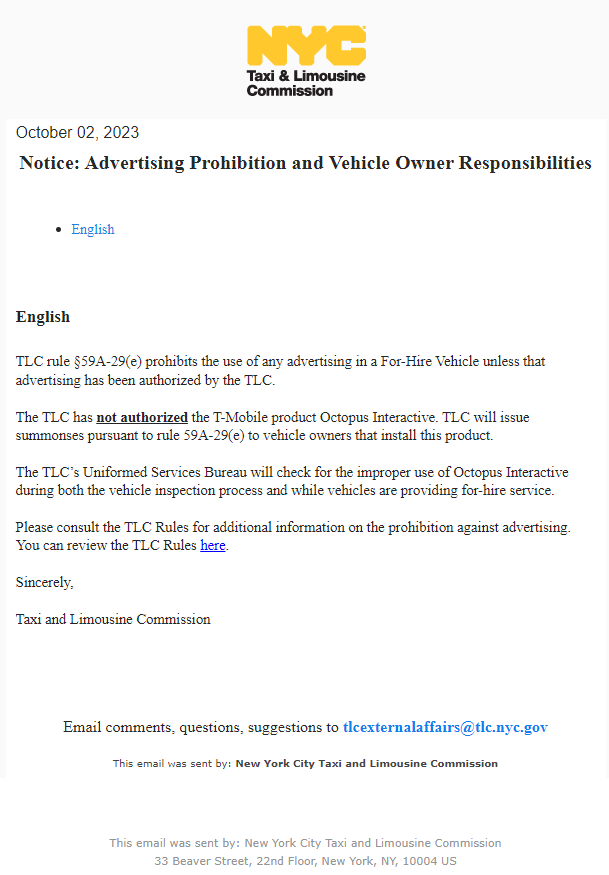🐙 Let There Be Ads!
Recent TLC warning to drivers & vehicle owners about using T-Mobile-owned Octopus Interactive tablets, should serve as inspiration to (once again) push for regulated, in-car ads in all NYC FHVs
A few days ago, the TLC sent an industry-wide email, warning against the use of T-Mobile-owned Octopus Interactive passenger tablets, that some drivers and vehicle owners attach to the back headrests of their vehicles front seats. Octopus essentially gives a cut of the ad revenue they generate to drivers and/or vehicle owners.
T-Mobile acquired Octopus’…
Keep reading with a 7-day free trial
Subscribe to AutoMarketplace to keep reading this post and get 7 days of free access to the full post archives.





